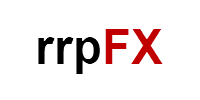Harnessing the Power of Automated Price Tracking in the B2B Sector
In the dynamic realm of business-to-business (B2B) transactions, where pricing can pivot on the nuances of supply and demand, automated price tracking tools are revolutionizing how companies stay competitive. This technology empowers businesses with the ability to automatically and continuously monitor the pricing strategies of their competitors, ensuring they can respond swiftly and effectively to market changes.
What is Automated Price Tracking?
Automated price tracking is an advanced analytical tool that employs algorithms to systematically scan and collect pricing information from various sources across the internet. This includes competitor websites, online marketplaces, and digital catalogs. The technology is designed to gather data in real-time, providing businesses with up-to-the-minute insights into their competitors' pricing strategies and market trends.
Key Benefits of Automated Price Tracking
1. Real-Time Market Insights: Automated price tracking provides continuous surveillance of market prices, offering businesses immediate updates on competitor price changes. This real-time data is crucial for making informed pricing decisions quickly, a competitive advantage in fast-moving markets.
2. Enhanced Pricing Strategy: With access to ongoing competitive pricing information, companies can refine their pricing strategies. This might involve adjusting prices to stay competitive, adopting psychological pricing tactics, or identifying opportunities to differentiate products on value rather than just cost.
3. Increased Operational Efficiency: Automating the labor-intensive process of price tracking saves considerable time and resources. It eliminates the need for manual price checks and reduces the likelihood of human error, allowing staff to focus on more strategic tasks that add value to the business.
4. Improved Profit Margins: By strategically aligning pricing with market dynamics, businesses can better protect and potentially increase their profit margins. Automated price tracking helps identify the optimal price points that attract customers while maintaining a profitable margin.
5. Data-Driven Decision Making: The comprehensive data collected by automated price tracking systems enables businesses to make decisions based on robust analytics. This approach minimizes risks associated with pricing decisions and supports a more empirical understanding of market behaviors.
Implementing Automated Price Tracking
To effectively implement an automated price tracking system, businesses should consider the following steps:
-
Choose the Right Tools: Select a price tracking solution that aligns with your business size, industry, and specific needs. Features to look for include integration capabilities, the frequency of updates, and the ability to track multiple competitors across various channels.
-
Set Strategic Goals: Define what you aim to achieve with price tracking, whether it's maintaining competitive parity, increasing market share, or enhancing profit margins.
-
Integrate with Other Systems: For maximum impact, integrate the price tracking system with other business management tools, such as inventory management and CRM systems. This integration allows for a holistic view of how pricing affects other areas of the business.
-
Analyze and Act on Insights: Regularly review the data provided by the automated price tracking system and use it to make informed decisions. Continuously refine your pricing strategy based on ongoing insights to maintain competitive advantage.
Automated price tracking is more than just a technological tool—it's a strategic asset in the B2B sector. By providing businesses with timely, actionable insights into competitive pricing, it supports smarter, more competitive pricing strategies that are crucial for success in today's marketplaces.
